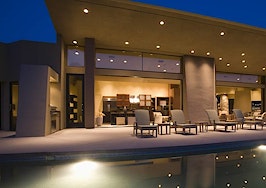Since 2014, the U.S. has gained 346 new $1 million neighborhoods, which can be a good thing — or a not-so-good thing, depending on how you look at it.
According to Zillow, nearly one in 20 residential ZIP codes fall into this category because 10 percent of the homes in the area are worth $1 million or more.
On one hand, the upshot of highly valued homes is due to the housing market’s recovery from the Great Recession when home values plummeted at an average of 22.9 percent.
On the other hand, the increase in $1 million neighborhoods reflects the continuing struggle with low inventory, booming home prices and lack of affordable housing.

Coastal cities have experienced the greatest increase in $1 million ZIP codes — 114 of the 346 areas that reached the threshold in 2014 are located in six West Coast metros: Seattle; Portland, Oregon; San Francisco; San Jose; Los Angeles and San Diego.
On the East Coast, four metros — New York, Boston, Miami and Washington, D.C. — accounted for another 92 new $1 million homes ZIP codes.
For example, New York City has gained the most (53) million-dollar neighborhoods over the past three years, with San Francisco (36) and Los Angeles (29) rounding out the top three.
What this means for homeowners
“As home values reach new peaks, $1 million homes are increasingly common, even in neighborhoods once considered middle class,” said Zillow’s Chief Economist Dr. Svenja Gudell in a press release. “The U.S. median home value is just over $200,000, but in San Francisco, Los Angeles and other expensive cities, homes are worth much more.
“As home values hit seven figures in many neighborhoods, it’s going to have real impacts on affordability for middle-class homeowners whose incomes haven’t kept up, and this imbalance especially has implications for people on fixed incomes whose property taxes are rising along with their home value,” she added.
Of course, not all areas have experienced the same growth in $1 million neighborhoods. In St. Louis and Cincinnati, where the median home value is $50,000 below the national average of $200,000, there have been no new $1 million neighborhoods since 2007.











